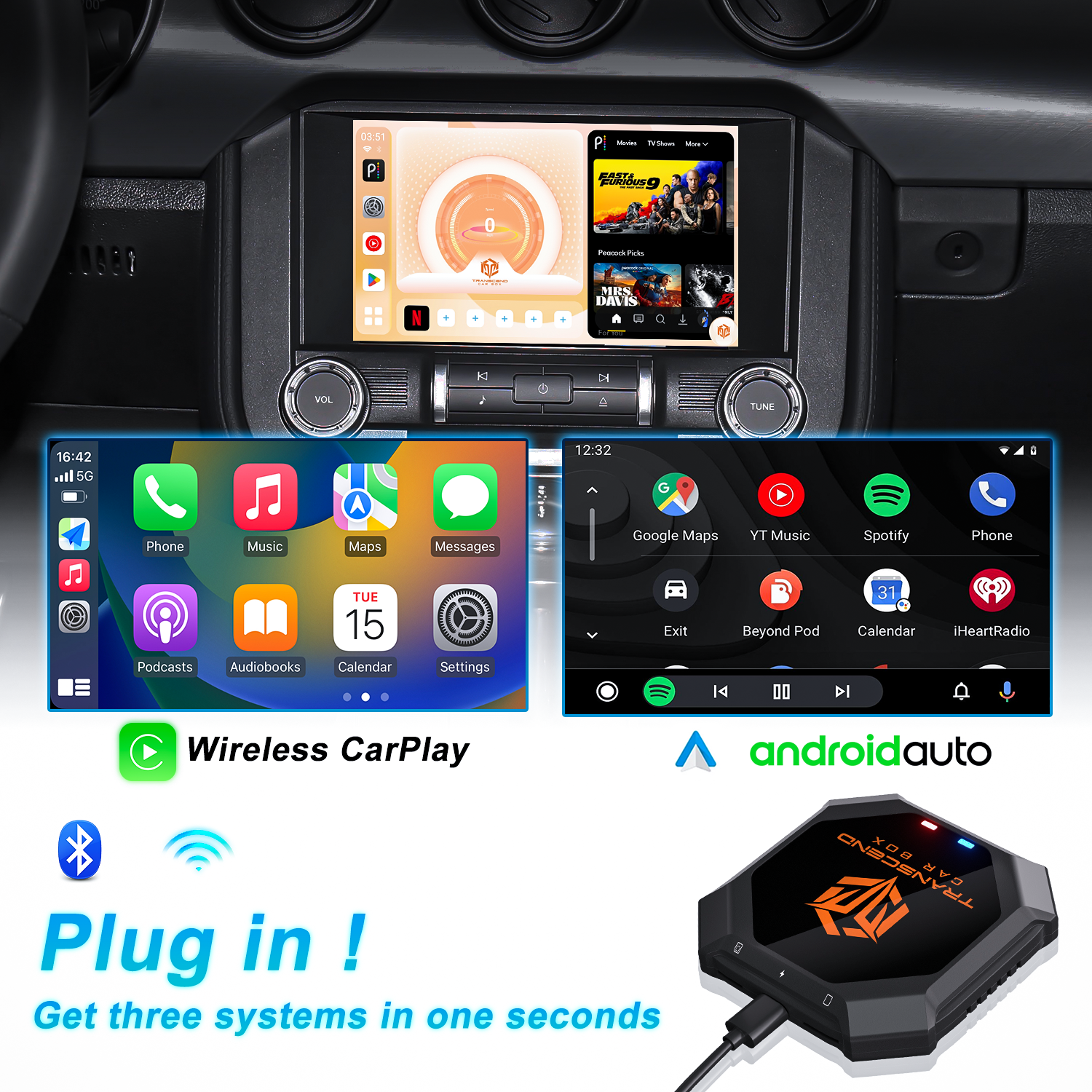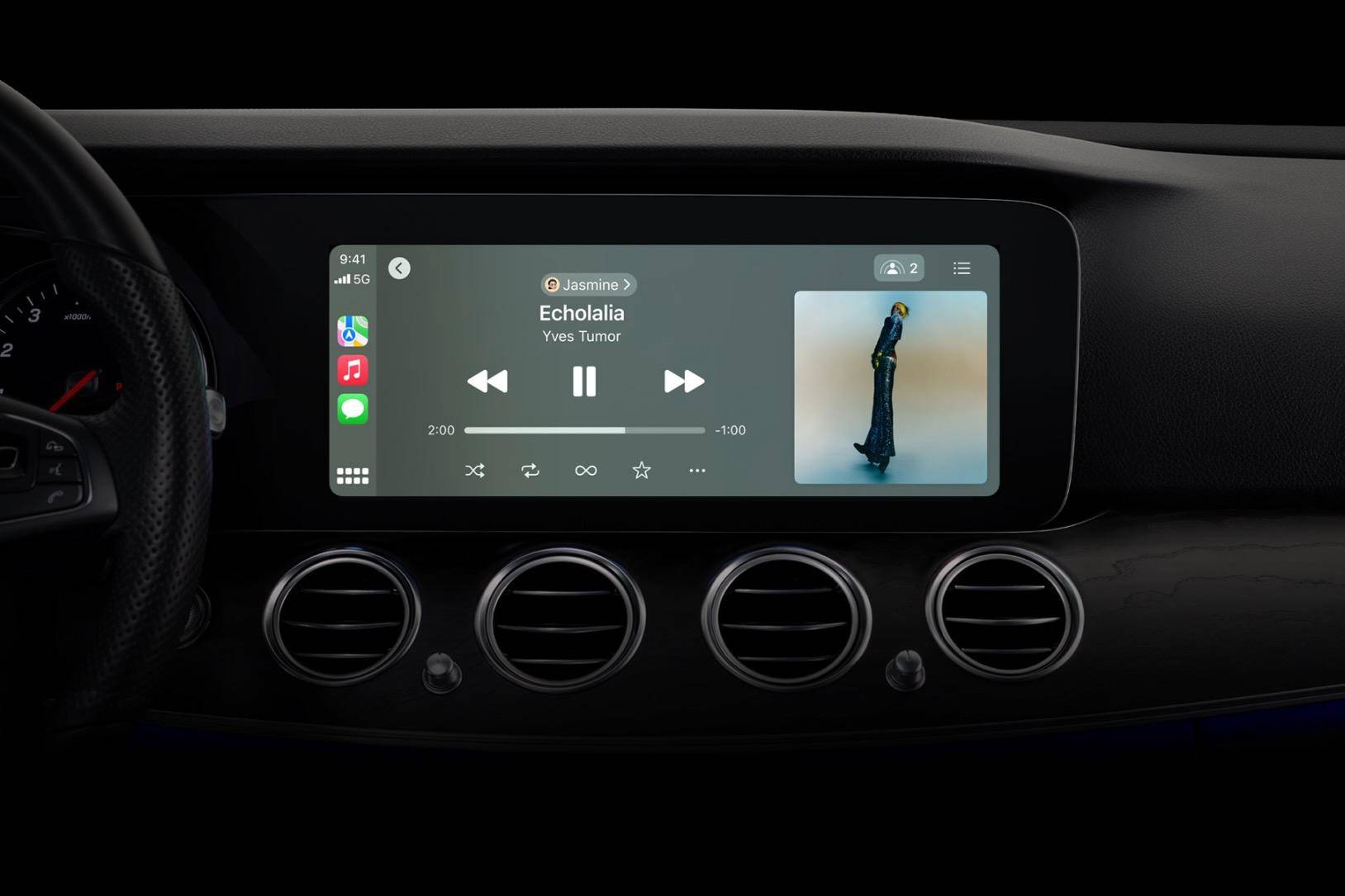Introduction:
In today's increasingly connected world, Apple CarPlay has become a staple in modern vehicles, enhancing the driving experience by seamlessly integrating your iPhone with your car's infotainment system. While Apple CarPlay offers a host of benefits, it's not uncommon for users to encounter issues that can be frustrating. In this comprehensive guide, we'll explore some of the most common Apple CarPlay issues and provide step-by-step solutions to help you get back on the road smoothly.

Section 1: Identifying Common Apple CarPlay Issues
Apple CarPlay is a remarkable tool, but it's not immune to glitches and hiccups. Here are some of the most common issues you might encounter when using Apple CarPlay, along with their symptoms:
Connectivity Problems:
-
Symptoms:
- CarPlay Not Appearing: One of the most common connectivity issues is when CarPlay doesn't appear on your car's infotainment screen after connecting your iPhone.
- Frequent Disconnections: You might experience frequent disconnections, where CarPlay connects initially but then disconnects without warning.
-
Causes:
- Cable and Port Issues: Damaged or low-quality USB cables, as well as dust or debris in the USB ports, can cause connectivity problems.
- Bluetooth Conflicts: Incorrect Bluetooth settings or conflicts between devices can disrupt the connection.
App Crashes:
-
Symptoms:
- Apps Closing Unexpectedly: Apps like Apple Maps or Spotify might unexpectedly crash and close while you're using them through CarPlay.
- Freezing: Apps may freeze or become unresponsive during use, requiring you to restart them.
-
Causes:
- App Compatibility: Some apps may not be optimized for CarPlay or may have compatibility issues with your iPhone's iOS version.
- Memory and Performance: If your iPhone is running low on memory or processing power, it can lead to app crashes.
Audio Problems:
-
Symptoms:
- Distorted Audio: You may encounter issues with audio quality, such as crackling, popping, or distorted sound.
- No Sound: In some cases, audio may not play at all, whether it's music, phone calls, or Siri responses.
-
Causes:
- Volume Settings: Incorrect volume settings on either your iPhone or the car's infotainment system can lead to audio problems.
- Mute Controls: Accidentally activated mute controls on the car's interface or your iPhone can cause sound issues.
- Cable Connections: Loose or damaged cable connections can disrupt audio playback.
Identifying these common issues and their symptoms is the first step in resolving them. In the following sections, we'll delve into step-by-step troubleshooting methods and solutions for each of these problems, ensuring that your Apple CarPlay experience remains smooth and enjoyable.

Section 2: Troubleshooting Steps
Connectivity Problems:
-
Step 1: Check Cables and Ports
- Inspect the USB cable for any visible damage or fraying. Replace it with a high-quality, MFi-certified cable if necessary.
- Examine the USB ports on both your iPhone and the car's infotainment system. Remove any dust or debris using compressed air or a soft brush.
-
Step 2: Restart Your Devices
- Restart both your iPhone and the car's infotainment system. This can help clear temporary glitches that may be causing connectivity issues.
-
Step 3: Reset Bluetooth Settings
- On your iPhone, go to "Settings" > "Bluetooth" and toggle Bluetooth off and on. Ensure that your car's infotainment system is discoverable in the Bluetooth settings.
App Crashes:
-
Step 1: Force-Close and Reopen Apps
- Double-press the home button on your iPhone (for models with a home button) or swipe up from the bottom (for iPhone X and later) to access the app switcher.
- Swipe left or right to find the app that's causing problems, then swipe it up or off the screen to force-close it.
- Reopen the app from the CarPlay interface and check if it functions correctly.
-
Step 2: Check for App Updates
- Open the App Store on your iPhone.
- Tap your profile picture in the top right corner.
- Scroll down to the "Available Updates" section and update any CarPlay-compatible apps.
- If an app is causing persistent issues, try deleting it and reinstalling it from the App Store.
Audio Problems:
-
Step 1: Adjust Volume Settings
- Check the volume settings on your iPhone and ensure they are not set to a very low or muted level.
- On the car's infotainment system, verify that the volume is appropriately adjusted for CarPlay.
- Make sure the mute controls on both your iPhone and the car are turned off.
-
Step 2: Reconnect the Cable
- Disconnect the USB cable from your iPhone and reconnect it firmly.
- If possible, try using a different USB port on the car's infotainment system.
-
Step 3: Verify App Audio Settings
- Within CarPlay, open the specific app that's having audio problems.
- Check the app's audio settings to ensure that the audio output is directed to CarPlay and not the phone's internal speaker.
By following these troubleshooting steps, you should be able to resolve many common Apple CarPlay issues related to connectivity, app crashes, and audio problems. If the issues persist, or if you encounter more complex problems, don't hesitate to reach out to your car's manufacturer's support or Apple's customer service for further assistance. In the next section, we'll explore advanced troubleshooting methods and preventive measures to ensure a smooth CarPlay experience.
Section 3: Advanced Troubleshooting
While the previous section covered basic troubleshooting steps, sometimes more persistent issues may require advanced solutions. Here's what you can do if the common Apple CarPlay issues persist:
Resetting Apple CarPlay:
-
Step 1: Disconnect and Reconnect
- Disconnect your iPhone from the car's USB port.
- Turn off the car's infotainment system.
- Wait for a minute or two, then turn the car's system back on.
- Reconnect your iPhone to the USB port and see if CarPlay functions correctly.
-
Step 2: Reset CarPlay Settings on Your iPhone
- On your iPhone, go to "Settings" > "General" > "CarPlay."
- Tap on your car's name under "My Cars" and select "Forget This Car."
- Reconnect your iPhone to the car's infotainment system, and it will set up CarPlay as if it's the first time.
-
Step 3: Factory Reset the Car's Infotainment System (As a Last Resort)
- Caution: This step should only be taken as a last resort and may result in the loss of some custom settings or saved data on your infotainment system.
- Consult your car's manual or contact your car manufacturer's customer support for guidance on how to perform a factory reset on your specific vehicle's infotainment system.
Consulting the Car's Manual or Customer Support:
-
Check the Car's Manual:
- Your car's manual can be an invaluable resource for troubleshooting CarPlay issues specific to your vehicle. It may provide insights into any known problems or quirks related to CarPlay integration.
-
Contact Customer Support:
- If the issues persist and you're unable to find a resolution, it's advisable to contact your car manufacturer's customer support. They can offer tailored assistance and may be aware of any firmware updates or solutions specific to your car's model.
Remember that advanced troubleshooting steps should only be attempted if basic solutions have failed to resolve your Apple CarPlay issues. Resetting your car's infotainment system, in particular, should be approached with caution and as a last resort.
In the next section of this guide, we'll explore preventive measures and best practices to help you avoid encountering these common issues in the future, ensuring a more seamless and enjoyable Apple CarPlay experience.

Section 4: Tips for Preventing Future Issues
While troubleshooting is essential, it's equally important to take steps to prevent common Apple CarPlay issues from arising in the first place. Here are some proactive tips and best practices:
- Regular Software Updates:
- iOS Updates: Keep your iPhone's iOS up to date. Apple frequently releases software updates that include bug fixes and improvements for CarPlay.
- Infotainment System Updates: Check for firmware updates for your car's infotainment system. Manufacturers often release updates to enhance compatibility and resolve issues.
- Using Quality Cables:
- Invest in high-quality, MFi (Made for iPhone) certified USB cables. Cheap or damaged cables can cause connectivity problems.
- Replace your USB cable if you notice any signs of wear or fraying.
- Optimize iPhone Performance:
- Regularly clean your iPhone of unnecessary apps, photos, and data. A cluttered device can slow down CarPlay performance.
- Ensure your iPhone has adequate free storage space for smooth operation.
- Check for Software Updates:
- Periodically check for software updates for CarPlay-compatible apps on your iPhone. Developers release updates to improve stability and functionality.
- Keep an eye on the App Store for updates and install them promptly.
- App Management:
- Only install apps that you regularly use on CarPlay. Unnecessary apps can clutter the CarPlay interface.
- Be cautious when using beta or experimental versions of apps, as they may have compatibility issues.
- Maintain Clean Connections:
- Routinely inspect the USB port on your iPhone for dust and debris. Clean it gently with compressed air or a soft brush.
- Keep the USB port on your car's infotainment system clean and free from obstructions.
- Review User Manuals:
- Familiarize yourself with your car's infotainment system by reading the user manual. It may contain specific troubleshooting steps and tips.
- Refer to the CarPlay section of your iPhone's user manual for device-specific guidance.
- Safe Handling of Your iPhone:
- Ensure your iPhone is securely mounted or stowed while driving to prevent physical damage and disconnections.
- Avoid handling your iPhone while driving to reduce distractions.
By implementing these tips and best practices, you can significantly reduce the likelihood of encountering common Apple CarPlay issues. Regular maintenance of your iPhone, infotainment system, and app updates will contribute to a seamless and enjoyable CarPlay experience, keeping your drives hassle-free and focused on the road. In the concluding section, we'll recap the importance of troubleshooting and proactive measures for a smooth CarPlay journey.
Conclusion:
In conclusion, Apple CarPlay is a fantastic feature that can transform your driving experience, but it's essential to be prepared for common issues that may arise. By following the troubleshooting steps outlined in this guide and implementing preventative measures, you can enjoy a seamless and hassle-free CarPlay experience. Remember, technology evolves, so staying informed and up-to-date is key to ensuring a smooth ride.
Additional Resources:
For further assistance and updates on Apple CarPlay, you can visit Apple's official support page or your car manufacturer's website.
Call to Action:
We value your feedback! If you've encountered unique CarPlay issues or have additional tips to share, please join the discussion in the comments section below. Subscribe to our blog for more informative articles on automotive technology and stay connected on the road !



コメントを書く
全てのコメントは、掲載前にモデレートされます
このサイトはhCaptchaによって保護されており、hCaptchaプライバシーポリシーおよび利用規約が適用されます。